Table of contents
- Out and about in Iceland Michael Martin: Departure into the ice deserts
- On the go Iceland: Part 2
- Info about Iceland

Martin
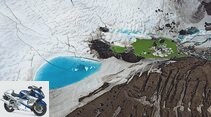
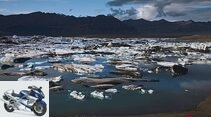
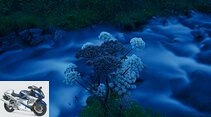
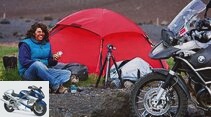
19th pictures

Martin
1/19
Glacier lakes on Vatnajokull.
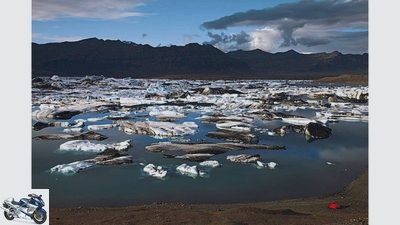
Martin
2/19
Some blocks of ice in the Jokulsarlon glacier lagoon wear black. At the bottom right the tent for size comparison.
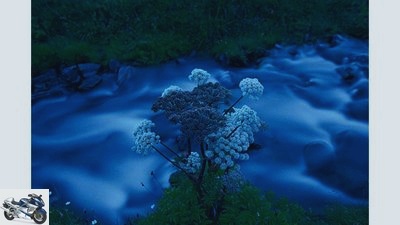
Martin
3/19
Nature that makes you humble: night scene by a stream.
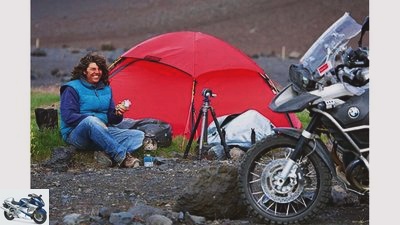
Martin
4/19
The idyllic campsite of the Kverkfjoll refuge also offers a green strip
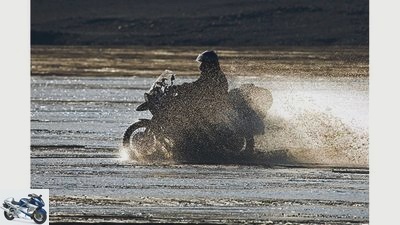
Martin
5/19
Crossing a flooded area of sand on the river.
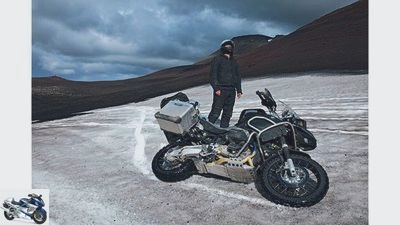
Martin
6/19
Snow fields are not easy to master, so caution is advised.
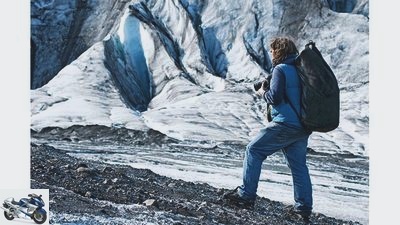
Martin
7/19
Mountain expedition in Fjallabak
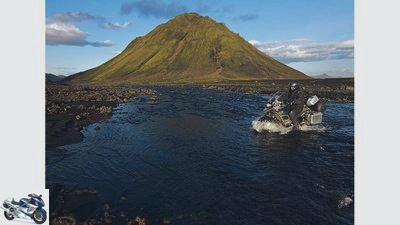
Martin
8/19
The drive through the ford in Fjallabak requires waterproof clothing.
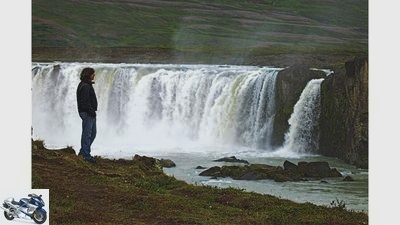
Martin
9/19
Break at Godafoss waterfall.

Martin
10/19
Contrast to arid deserts: the Sprengisandur slope crosses the highlands.
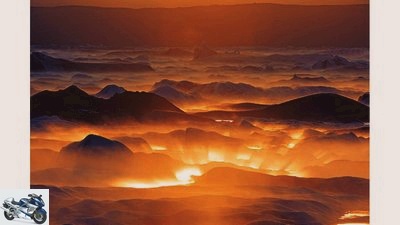
Martin
11/19
Light phenomena in the Jokulsarlon glacier lagoon are among the natural phenomena of Iceland.
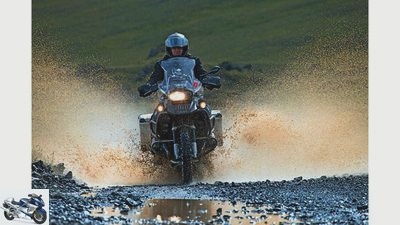
Martin
12/19
Michael Martin on the road: Driving on lava slopes requires a lot of sensitivity.
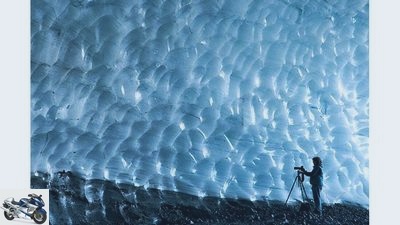
Martin
13/19
Desert driver Michael Martin in Iceland: Here the sensational natural staging of an ice cave under the Vatnajokull glacier.

Martin
14/19
Estuary on the south coast
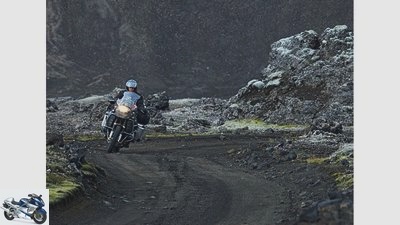
Martin
15/19
Lava-laden stretches like here in Fjallabak are not uncommon.
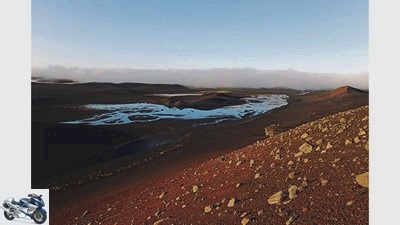
Martin
16/19
The sun brushes the landscape near Jokulheimar.
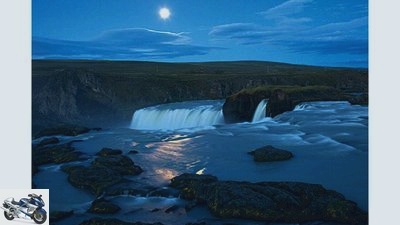
Martin
17/19
Godafoss waterfall in the northern highlands.
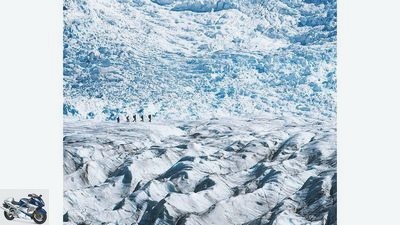
Martin
18/19
No vegetation: Vatnajokull is the largest glacier in the country.
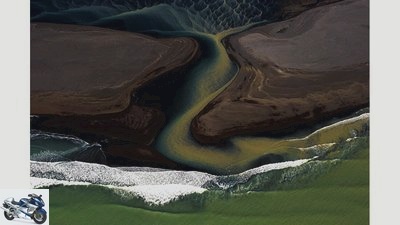
Martin
19/19
A photo stop for the estuary on the south coast is a must.
to travel
On the way Iceland: Departure into the ice deserts
Out and about in Iceland
Michael Martin: Departure into the ice deserts
Hardly is his project “The deserts of the earth” finished, the passionate desert driver Michael Martin is looking for new challenges. Because he cannot yet navigate the deserts of the moon, he opts for earthly ice deserts and goes to Iceland. Here the sun-kissed adventurer has to change drastically.
Michael Martin
02/04/2010
It’s cold, I’m wet and I think wistfully about my travels to the Sahara. In Italy at the latest, I always felt the sun on my skin, and now it’s raining all the way up to the Danish coast. The sun shines briefly on the ferry, but then the famous Icelandic depression catches up with me. The ship docks in Seydisfjordur on the fjord-rich east coast of Iceland, and I am happy to escape his diesel-laden belly. Put on your rain suit and out into the crystal clear Icelandic air. Immediately the road climbs steeply, soon I reach Egilsstadir, the first and at the same time the last larger town for a week.
Because I know that the highlands don’t offer any supplies, I store spaghetti, cheese and bread for several days. The Adventure’s large tank is filled, but does not offer enough range to cross the highlands. I pack two more five-liter canisters in the boxes.
Buy complete article
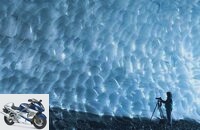
Out and about in Iceland
Michael Martin: Departure into the ice deserts
12 pages) as PDF
€ 2.00
Buy now
50 kilometers after Egilsstadir I leave the ring road and turn onto a gravel road, according to the map it is called 901. The vegetation has disappeared, nothing but black lava desert around me. The constant rain continues and irritates me increasingly. In the Sahara I only experienced a thunderstorm, but not this never-ending flood that almost makes me despair. I quickly learn that continuous rain and desert in Iceland are not a contradiction in terms. The precipitation seeps away immediately into the volcanic, porous subsoil and is therefore not available to plants. In addition, the lava surfaces are often so young that no fertile soil can form. Geographers call such deserts edaphic.
The slope, which is now called 905, has good grip even when it rains, so my speedometer needle is usually 80 km / h. There is no traffic. After an hour’s drive, I spot a group of cars in the distance, traffic jams in front of the first ford. Already on the ferry I had heard many stories from motorcyclists about the Icelandic fords, there was talk of flooded engines and washed away motorcycles. The cars are now slowly feeling their way through the wide ford, I try to estimate how deep it is. Then it’s my turn, the Italian off-road vehicle drivers on the other bank have taken out their cameras. You want to see me bathe.
I feel my way into the river centimeter by centimeter and keep the engine happy in first gear, it must not die under any circumstances. My hand does magic on the clutch lever, I can’t be too fast, but also not too slow. Concentrated, I don’t feel the ice water getting into my motorcycle boots and I keep struggling across the current. I know that the GS sucks in air high up, but I never thought that a water depth of over a meter would be feasible. In the middle of the river, the end threatens, I get stuck on a large stone. At the last second I manage to drag the machine around him, slowly gaining land. I have to disappoint the Italians, the GS motor steams from every pore, but it runs. I’m nervously exhausted, but hear the off-road vehicle drivers applaud behind me.
I’m so wet that I don’t even notice the rain stop. The piste to the south allows higher speed, another ford doesn’t stop me for long. Soon only the feet in the boots will be damp, the rest of them will dry well. I enjoy the long daylight, it is ten o’clock in the evening and it is still quite bright. I euphorically follow piste 902 further south and reach the refuge below Kverkfjoll around midnight. The accommodations of the nature conservation authority are made of wood, offer beds and, above all, a heated lounge and a well-equipped kitchen. For me, the old desert fox, a night in the mattress dorm is out of the question, but there are always camping opportunities at the huts, here especially nicely on specially laid grass strips in the middle of the volcanic desert.
Already at four o’clock I wake up and look around: Nothing but lava deserts, only in the southeast the largest glacier in Europe, the Vatnajokull, shines in the morning sun. Between the ice, steam rises like a column into the Icelandic sky. I have to go up there! When I ask the rangers who are resident in the hut for directions, they offer me a day tour. It initially leads over a flat glacier tongue, but soon becomes steeper, hold the crampons on your motorcycle boots and grip well in the ice. Halfway up the ranger stops and suddenly tells me that this is the end. My shoes and motorcycle pants are unsuitable for the further ascent. I protest, but it remains tough. In addition, her colleagues discovered a motorcycle trail in the lava sand that must have come from me.
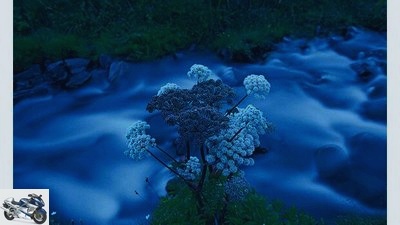
Martin
Nature that makes you humble: night scene by a stream.
I remember turning the motorcycle around on the slope the night before and making a small curve through the lava sand. It is forbidden to follow any off-road driving. I’m trying to explain the difference between turning maneuvers and driving off-road, but there’s no point. She’s pissed off and I’m not allowed up to the hot springs. Furious, I let her stand and dismount. I happened to come across an ice cave at the end of the glacier tongue. I go in cautiously and am overwhelmed by its beauty. The cave has a diameter of seven meters and is more than a hundred meters long. The ice shimmers in the most beautiful shades of blue, a river flows through it, and man-high blocks of ice lie on the bank like statues.
The Askia volcano is 80 kilometers northwest of Kverkfjoll, and here I can camp next to the refuge too. A walk takes me to the crater rim that surrounds Lake Oskjuvatn. At its northern edge lies another crater, the Viti explosion crater. A milky blue lake smiles up at me from its bottom. Iceland couldn’t be more beautiful.
On the go Iceland: Part 2

Martin
Some blocks of ice in the Jokulsarlon glacier lagoon wear black. At the bottom right the tent for size comparison.
I hadn’t read anything good about my further route. I want to drive over from Askia to the so-called Sprengisandur. The slope leaves the Askia to the south and is soon very sandy. Unlike the Sahara sand, that of the Icelandic highlands is soaked with water and correspondingly heavy. Letting off air helps here, too, but the black stuff remains difficult to control. Falls are dangerous because there are many stones in the sand. Dodging off the track is out of the question due to the strict requirements of the nature conservation authority.
The soft sand has finally come to an end, the route leads over the large area of the sander, on which there is centimeter-high water. The motorcycle plows through the water, and thanks to solid ground, the machine can also be controlled well on this floodplain. On the left hand the ice masses of Vatnajokull reach the sander, then the slope climbs hard rock, on which I have to balance the motorcycle at walking pace. The slope is now barely visible and meanders through wild, rugged landscape.
In the late evening I reach the Sprengisandur, a gray ground moraine area with extensive sand and gravel areas. Again, hip-deep fords cost me strength and nerves. The landscape would be desolate if the ice surfaces of the glaciers Hofsjokull, Tungnafellsjokull and Vatnajokull did not shine over the black lava desert.
I spend the night in front of another refuge belonging to the nature conservation authority. The next day I tackle the southern part of the Sprengissandur and reach the nature reserve Fjallabak, whose landscape is one of the most fascinating in Iceland. I am enthusiastic about the contrast between the deep black lava plains and the volcanoes, which are overgrown with mosses and lichens and therefore glow green. The rhyolite mountains, whose colors reach their peak in Landmannaluagar, are also typical of the region.
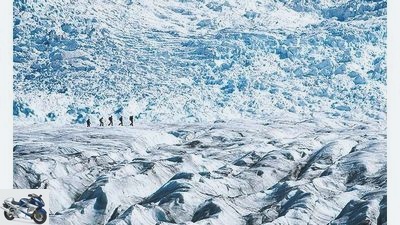
Martin
No vegetation: Vatnajokull is the largest glacier in the country.
After more grueling fords, I reached the south coast of Iceland and turned east. The largest glacier in the country, the Vatnajokull, pushes itself within a few kilometers of the Atlantic. Its ice sheet covers numerous mountains and volcanoes, including Hvannadalshnukur, the highest mountain in Iceland at 2119 meters. I get into the area of the west wind zone, where the greatest amounts of precipitation are measured with up to 8000 millimeters per year. What I really feel: unlike in my beloved dry deserts, I have to wait days for good weather here.
Again and again I study with the Icelandic pilot Jon Sigurdsson the direction of migration of the Icelandic Depression, which is also well-known in Central Europe as a rainbringer. In a gap between two rain showers, we ascend with his twin-engine machine and fly over the Skeidararsandur and the Vatnajokull glacier. Due to the days of rain, I manage to take unique pictures of rivers, estuaries and glacial lakes. The particularly mild and rainy weather gives me more photographic moments of happiness at the Jokulsaron glacier lake. The ice masses of the Breidamerkurjokull glacier, which connects to the Vatnajokull, end at a width of 20 kilometers in the Jokulsarlon glacial lake and calve there. Blocks of ice drift silently in the 120-meter-deep lake, some of which are colored black by ash.
<!– ESI FOR ads.BannerGallery / irelements / esielement / eyJwYWdlIjoiL3N0YXJ0c2VpdGUvIiwibGF5b3V0IjoiYXJ0aWNsZSIsImVsZW1lbnQiOiJhZHMuQmFubmVyR2FsbGVyeSIsImlyQ29uZmlnIjoiMTQ3MzU4NDciLCJwYXJhbXMiOnt9LCJpc01vYmlsZSI6ZmFsc2V9 –> <!– CACHEABLE –>&# 34;,&# 34; rectangle&# 34 ;: “<!–# include virtual = \&# 34 / irelements / esielement / eyJwYWdlIjoiL3N0YXJ0c2VpdGUvIiwibGF5b3V0IjoiYXJ0aWNsZSIsImVsZW1lbnQiOiJhZHMuUmVjdGFuZ2xlR2FsbGVyeSIsImlyQ29uZmlnIjoiMTQ3MzU4NDciLCJwYXJhbXMiOnt9LCJpc01vYmlsZSI6ZmFsc2V9 \&# 34; –> <!– ESI FOR ads.RectangleGallery / irelements / esielement / eyJwYWdlIjoiL3N0YXJ0c2VpdGUvIiwibGF5b3V0IjoiYXJ0aWNsZSIsImVsZW1lbnQiOiJhZHMuUmVjdGFuZ2xlR2FsbGVyeSIsImlyQ29uZmlnIjoiMTQ3MzU4NDciLCJwYXJhbXMiOnt9LCJpc01vYmlsZSI6ZmFsc2V9 –> <!– CACHEABLE –>&# 34;,&# 34; sky&# 34 ;: “<!–# include virtual = \&# 34 / irelements / esielement / eyJwYWdlIjoiL3N0YXJ0c2VpdGUvIiwibGF5b3V0IjoiYXJ0aWNsZSIsImVsZW1lbnQiOiJhZHMuU2t5R2FsbGVyeSIsImlyQ29uZmlnIjoiMTQ3MzU4NDciLCJwYXJhbXMiOnt9LCJpc01vYmlsZSI6ZmFsc2V9 \&# 34; –> <!– ESI FOR ads.SkyGallery / irelements / esielement / eyJwYWdlIjoiL3N0YXJ0c2VpdGUvIiwibGF5b3V0IjoiYXJ0aWNsZSIsImVsZW1lbnQiOiJhZHMuU2t5R2FsbGVyeSIsImlyQ29uZmlnIjoiMTQ3MzU4NDciLCJwYXJhbXMiOnt9LCJpc01vYmlsZSI6ZmFsc2V9 –> <!– CACHEABLE –>&# 34;}}” ga-track-vis =”article.gallery.inline.vis” class =”v-A_-article__inline-container”>
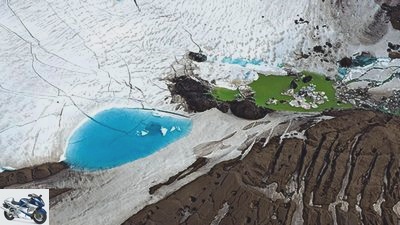
Martin




19th pictures
Pictures: Out and about in Iceland
go to Article
To home page
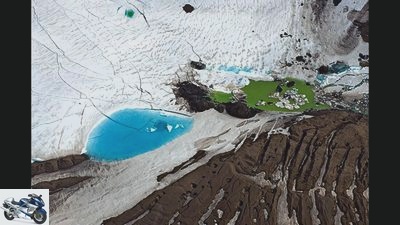
Martin

Martin
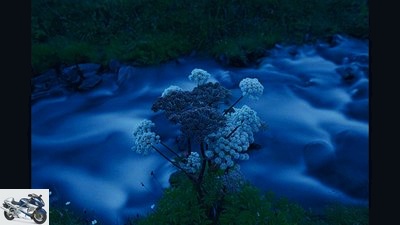
Martin
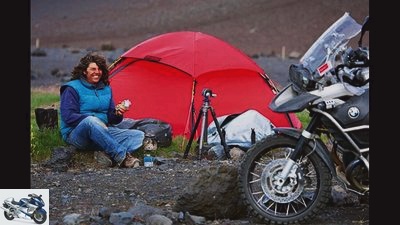
Martin
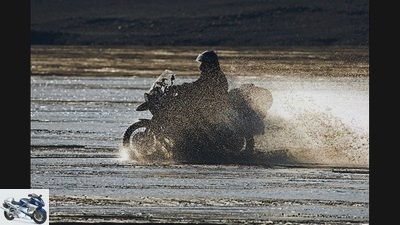
Martin
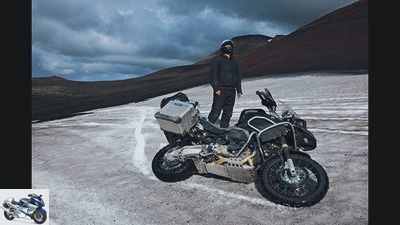
Martin
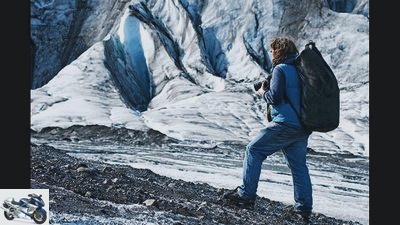
Martin
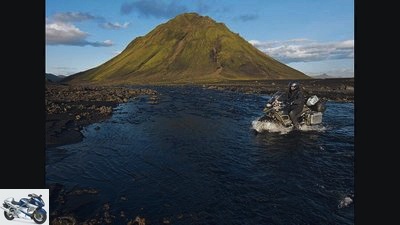
Martin

Martin
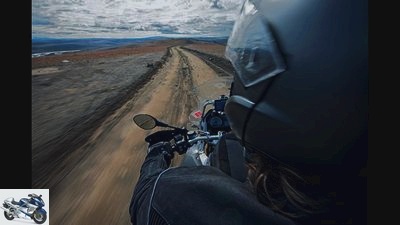
Martin
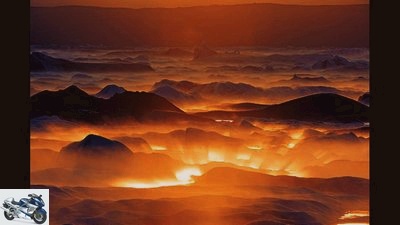
Martin
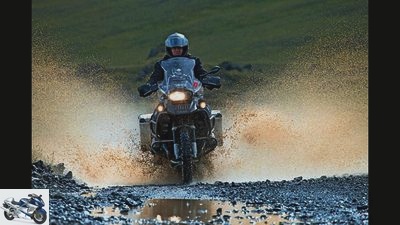
Martin
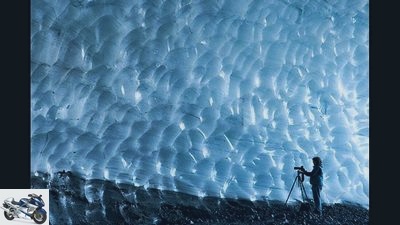
Martin
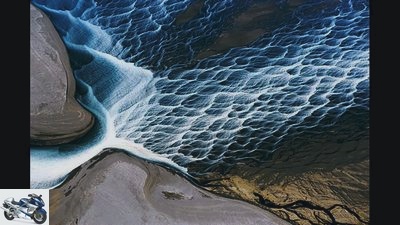
Martin
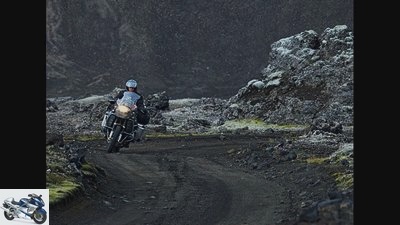
Martin
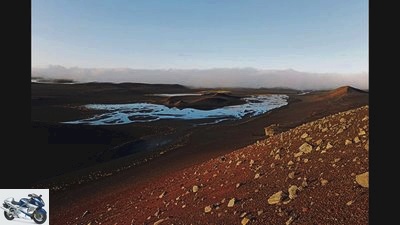
Martin
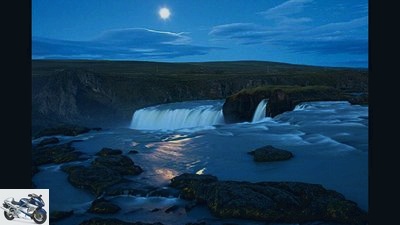
Martin
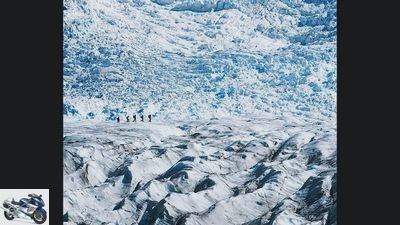
Martin
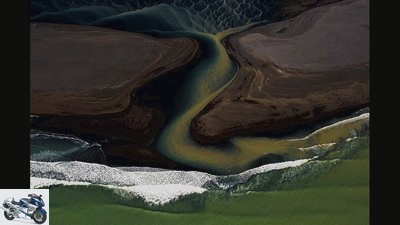
Martin
1/19
I park the GS, walk with my luggage over the terminal moraine to the glacier lake and set up my tent on the bank. An hour before sunset the cloud cover tears open in the west and the evening sun brushes the glacier. As the moist air cools down, banks of fog form between the ice blocks in the eastern part of the glacial lake, which slowly move westwards and begin to glow in the backlight. I stand on the terminal moraine of the glacier and can no longer get my finger off the camera’s shutter button. Fog and sunlight are constantly changing. The highlight of the natural spectacle is a halo that forms when the sunlight is reflected upwards from the surface of the water between the glacier fragments. Back at the tent, I follow the twilight, which lasts until shortly before midnight. Seals emerge from the ice water several times and watch me curiously. Ice floes drift past the shore again and again. It’s my last night in Iceland. Now the ice deserts of Greenland, Svalbard and Franz Josef Land are waiting to be explored. Fortunately, the GS has heated handles…
Info about Iceland
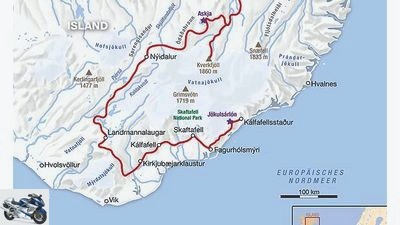
Drawing: archive
Capital: Reykjavik – Area: 103,100 km2 – Established: 1944 – Currency: Icelandic krona – Population: 32,000 – Travel time: 20 days – Distance covered: 1000 kilometers.
Fire and ice, these are the opposites that characterize Iceland. Motorcycling on the inhospitable island sometimes means driving challenges, but also always grandiose nature experiences.
Getting there:
The Noronna ferry of the Smyril-Line operates once a week between Hanstholm in northern Denmark and Seyoisfjordur on the east coast of Iceland. A passage lasts three days, on certain dates there is a two-day stopover on the Faroe Islands. The price for a return trip including a simple cabin is currently 286 euros, but will certainly increase in the high season. The 1500 passenger ferry is well equipped and has restaurants, bars and an indoor swimming pool. It doesn’t have to be a cabin, as sleeping bags on deck and in the aisles are accepted. All information at: www.smyril-line.de
Entry:
Only an identity card or passport is required for entry. EU citizens and Swiss citizens can stay in the country for up to three months, the motorcycle can be imported duty-free for up to one year, but may not be rented or sold. An EU driving license and national vehicle license are sufficient; motorcycles registered in Germany, Austria and Switzerland do not require a green insurance card.
Money:
The unit of currency is the Icelandic krona. Since the collapse of the banking system, the exchange rate has improved dramatically. The exchange is cheaper in Iceland than at home, money can be withdrawn from ATMs with the EC and credit card. Credit cards are widespread; even the smallest amounts are paid with them. The PIN number of the credit card is important, because this is required at unmanned petrol stations.
Accommodation / food:
Tent equipment should be carried with you in the highlands, as impassable fords or snowstorms can lead to an involuntary overnight stay. Many motorcyclists camp near the Icelandic Trekking Association’s huts, as these have heated lounges, electricity and cooking facilities. Mattress camps are often full and should be booked in advance. If you don’t want to be dependent on the huts, you should bring a stove. Guest cartridges and alcohol are available at the filling stations on the Ringstrasse.
Travel time / weather:
June, July and August are the main travel season. Sometimes the highland slopes don’t open until the beginning of July and close as early as the end of August. The weather is extremely changeable and unpredictable. In the highlands it can snow even in summer, storms are normal. The southern part of the highlands is more humid than the northern part. It is worth taking a look at the weather map when you get off the ferry and have to decide on a direction.
Motorcycling:
The highlands are crossed by the two routes Sprengisandur and Kjolur. The first is as long as it is legendary, the second is better developed and attractive thanks to two geothermal areas. There are also numerous secondary routes that vary in difficulty. The fords represent a driving challenge: never just drive in, always inspect the ford first. The main lane in particular can be driven deep by off-road vehicles or trucks. The second challenge is sand passages interspersed with stones. This is where reducing air pressure and having general experience in sand driving help. Should something happen, you can now rely on a well-developed mobile network in Iceland, even in the highlands, and on petrol stations with open WiFi networks on the ring road. When calculating the gasoline stocks, one should take into account higher consumption and possible reversals due to impassable fords.
Dates photo show:
Michael Martin’s new lecture tells in the final part of his motorcycle adventures in Iceland. More detailed information and free online reservations at www.michael-martin.de/termine.
The show can be seen in the following cities:
5.2. Bad Bergzabern, 6.2. Frei-burg, 7./8.2. Munich, 9.2. Cheeks i. A., 10.2. Velden (A), 11.2. Kassel, 6.3. Illertissen, 7.3. Munich, 8.3. Unterschleissheim, 9.3. Hanover, 10.3. Delbruck, 11.3. Schwebheim, 12.3. City wages, 13.3. Hofgeismar, 14.3. Aachen, March 15 Hamelin, March 16 Berlin, March 17 Nuremberg, March 18 Neusab, 19.3. Neu-hofen, 20.3. Homberg, March 21 Regensburg, March 22nd Waiblingen, March 23 Bobingen, March 24/25 Dehnberg, March 26th Wiesensteig, 27.3. Darmstadt, April 15 Gersthofen, April 19 Dresden, April 20 Nagold, April 22. Kaufbeuren, April 23 Wolfratshausen, April 24. Furstenfeldbruck, April 25 Cologne, April 26 Passau, 4.6. Zingst, 7.6. Bonn.
<!– ESI FOR ads.BannerGallery / irelements / esielement / eyJwYWdlIjoiL3N0YXJ0c2VpdGUvIiwibGF5b3V0IjoiYXJ0aWNsZSIsImVsZW1lbnQiOiJhZHMuQmFubmVyR2FsbGVyeSIsImlyQ29uZmlnIjoiMTQ3MzU4NDciLCJwYXJhbXMiOnt9LCJpc01vYmlsZSI6ZmFsc2V9 –> <!– CACHEABLE –>&# 34;,&# 34; rectangle&# 34 ;: “<!–# include virtual = \&# 34 / irelements / esielement / eyJwYWdlIjoiL3N0YXJ0c2VpdGUvIiwibGF5b3V0IjoiYXJ0aWNsZSIsImVsZW1lbnQiOiJhZHMuUmVjdGFuZ2xlR2FsbGVyeSIsImlyQ29uZmlnIjoiMTQ3MzU4NDciLCJwYXJhbXMiOnt9LCJpc01vYmlsZSI6ZmFsc2V9 \&# 34; –> <!– ESI FOR ads.RectangleGallery / irelements / esielement / eyJwYWdlIjoiL3N0YXJ0c2VpdGUvIiwibGF5b3V0IjoiYXJ0aWNsZSIsImVsZW1lbnQiOiJhZHMuUmVjdGFuZ2xlR2FsbGVyeSIsImlyQ29uZmlnIjoiMTQ3MzU4NDciLCJwYXJhbXMiOnt9LCJpc01vYmlsZSI6ZmFsc2V9 –> <!– CACHEABLE –>&# 34;,&# 34; sky&# 34 ;: “<!–# include virtual = \&# 34 / irelements / esielement / eyJwYWdlIjoiL3N0YXJ0c2VpdGUvIiwibGF5b3V0IjoiYXJ0aWNsZSIsImVsZW1lbnQiOiJhZHMuU2t5R2FsbGVyeSIsImlyQ29uZmlnIjoiMTQ3MzU4NDciLCJwYXJhbXMiOnt9LCJpc01vYmlsZSI6ZmFsc2V9 \&# 34; –> <!– ESI FOR ads.SkyGallery / irelements / esielement / eyJwYWdlIjoiL3N0YXJ0c2VpdGUvIiwibGF5b3V0IjoiYXJ0aWNsZSIsImVsZW1lbnQiOiJhZHMuU2t5R2FsbGVyeSIsImlyQ29uZmlnIjoiMTQ3MzU4NDciLCJwYXJhbXMiOnt9LCJpc01vYmlsZSI6ZmFsc2V9 –> <!– CACHEABLE –>&# 34;}}” ga-track-vis =”article.gallery.inline.vis” class =”v-A_-article__inline-container”>

Martin




19th pictures
Pictures: Out and about in Iceland
go to Article
To home page

Martin

Martin

Martin

Martin

Martin

Martin

Martin

Martin

Martin

Martin

Martin

Martin

Martin

Martin

Martin

Martin

Martin

Martin

Martin
1/19
Related articles
-
Martin to travel Deserts of the earth Deserts of the earth Motorcycling at the limit Photographer Michael Martin took five years to realize his new…
-
Deleker 29 pictures Deleker 1/29 Black sand, lakes and glaciers. Iceland has an incredible landscape to offer. Deleker 2/29 With this rich green ……
-
to travel Iceland Iceland Caught cold If you enjoy encountering winter in summer, driving your enduro through rainy deserts or marveling at volcanoes and…
-
Out and about: Michael Martin Special
Michael Martin 53 pictures Martin 1/53 Of course, that makes Indian men curious. Martin 2/53 … on the most beautiful slopes in the world. Martin 3/53…
-
With the motorcycle through national parks and desert
Breakable 14th pictures Breakable 1/14 Wild West – With a BMW R 1200 GS on secondary routes through national parks and deserts. Breakable 2/14 The…
-
Artist 18th pictures Honda 1/18 Honda 2/18 Honda 3/18 Honda 4/18 Honda 5/18 Honda 6/18 Honda 7/18 Honda 8/18 Honda 9/18 Honda 10/18 Honda 11/18 Honda…
-
MOTORCYCLE On the Road: Tunisia
Huh to travel MOTORCYCLE On the Road: Tunisia On the way: Tunisia Wind, sand and stars Tunisia attracts with beach and sun. Those who only go on vacation…
-
to travel Namib desert Namib desert The desert begins behind Rostock The Namib stretches along the entire coast of Namibia: a desert in the former colony…
-
Travel: Halfway around the world by motorcycle
archive 15th pictures Hofmann 1/15 Steven’s Way of Life: The twelfth part takes Steven over Nepal’s bridges, mountains and valleys. Hofmann 2/15 The…
-
Comparison test Honda CBF 1000 F and Suzuki Bandit 1250 S
Bilski 32 pictures Bilski 1/32 The CBF 1000 F looks more elegant, dignified, sleeker. The 1250 Bandit comes across as beefier, more powerful with a more…